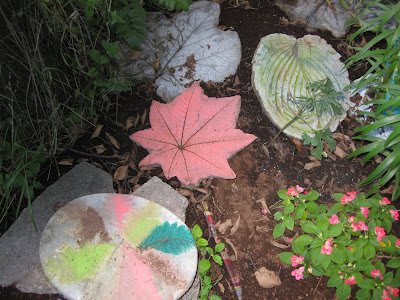
 My castor bean looks really pitiful next to Lindas.
My castor bean looks really pitiful next to Lindas.The castor oil plant, Ricinus communis, is a species of flowering plant in the spurge family, Euphorbiaceae.
Castor seed is the source of castor oil, which has a wide variety of uses. The seeds contain between 40% and 60% oil that is rich in triglycerides, mainly ricinolein. . The seed coat contains ricin, a toxin, which is also present in lower concentrations throughout the plant.
The toxicity of raw castor beans due to the presence of ricin is well-known. Although the lethal dose in adults is considered to be 4 to 8 seeds, reports of actual poisoning are relatively rare. According to the 2007 edition of the Guinness Book of World Records,
Castor seeds have been found in Egyptian tombs dating back to 4000 BC being used mostly to fuel lamps because of the slow burning oil. Herodotus
 turtle bench at Turtle River State Park.
turtle bench at Turtle River State Park. A pink bottle has sprouted on my blue bottle tree.
A pink bottle has sprouted on my blue bottle tree.

 Some of Linda's caster bean leaves
Some of Linda's caster bean leaves

 Poor old tired driveway is getting a face lift. Menards had Vinyl Cement Patch on sale. Yiipee!
Poor old tired driveway is getting a face lift. Menards had Vinyl Cement Patch on sale. Yiipee! Mike & I went to the Glad Festival at Honker Flats in Middle River, MN
Mike & I went to the Glad Festival at Honker Flats in Middle River, MN One glad blooming. Going to the Glad Festival at Honker Flats
One glad blooming. Going to the Glad Festival at Honker Flats Ron in his pink shirt & red car, going golfing.
Ron in his pink shirt & red car, going golfing.

